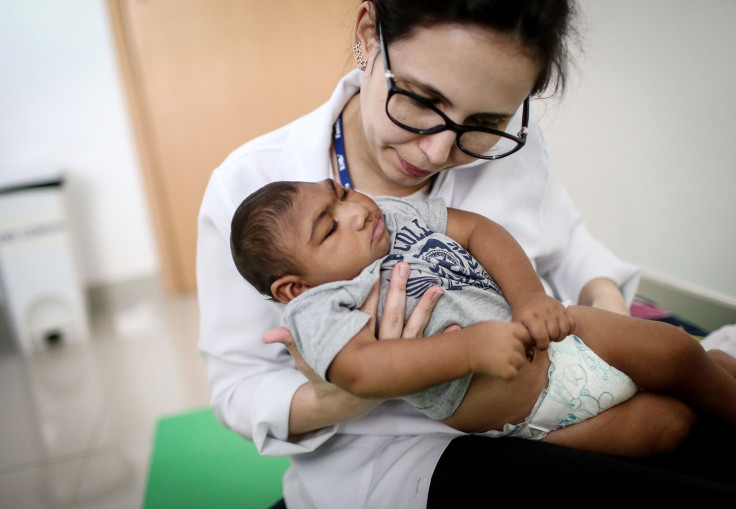The ‘New Normal’: How Zika Virus Will Affect The Mental, Physical Health Of Children In The Americas

As Zika virus continues to spread throughout South America and the Caribbean, scientists are scrambling to better understand the possible long-term complications of infection. While they still aren’t entirely certain what chronic diseases — aside from microcephaly and other brain defects — may arise from Zika, a new paper published in JAMA Pediatrics explores how the virus may create new treatment paradigms in child mental and physical health.
“As Zika virus infection spreads across the Latin American and Caribbean region and then into the southern United States, we can expect to see thousands of additional children born with microcephaly and possibly many more newborns or even older infants with signs of more subtle but significant neurologic defects and developmental delays,” the authors write. “Just as [HIV/AIDS] created a ‘new normal’ in the field of pediatrics beginning in the 1990s, can we expect new paradigms in child health from Zika virus?”
The World Health Organization (WHO) predicts that up to four million people could be infected with Zika by the end of 2016, and the authors of the paper note that it’s “likely that tens of thousands of children could be affected by a spectrum of neurologic and psychiatric illness in the next year and beyond.” In short, doctors will need to be prepared to meet a wave of Zika-related health cases, particularly among children who were born to Zika-infected mothers — and studying how pediatricians responded to the HIV/AIDS crisis decades ago might help.
“We are just now waking up to a new normal as we learn more about the complete mental health effects of Zika virus infection,” the authors note. “We will likely need to educate and train a new generation of primary care providers, including pediatricians and pediatric nurse practitioners. We will need to assemble interdisciplinary teams of pediatric specialists in neonatology, neurology, psychiatry, rehabilitation medicine and the infectious diseases to organize diagnostic, clinical management, and treatment approaches and algorithms for this new illness.”
There’s currently no cure or treatment for the virus, though most symptoms (fever, rash, joint pain, muscle pain, and headache) are either mild or nonexistent. The greatest dangers lie in the link between Zika infection and chronic diseases that develop in Zika patients or their children later, like microcephaly, Guillan-Barré Syndrome, and even eye problems. According to the CDC, scientists still don’t know whether a woman who was previously infected with Zika has a risk of transferring the virus to her fetus even after it has appeared to clear from her blood, one of the reasons why some athletes are avoiding the Olympics this year or freezing their sperm.
While the bulk of Zika cases have occurred in Brazil and Colombia, the researchers cite poverty, crowding, and high A. aegypti mosquito populations as risk factors for El Salvador, Guatemala, Honduras, Nicaragua, Mexico, and Haiti to develop their own Zika outbreaks. And the U.S. isn’t immune either: It’s likely that urban areas are at risk, especially those that are poorer and have higher levels of the A aegypti mosquito, like Houston, New Orleans, and other Gulf Coast cities. The authors of the latest paper predict that up to one million pregnancies in these areas could be at risk of Zika-related health problems and unknown mental health effects that “may not be fully realized for years.”
“Within 9 months from now — by the end of 2016 and into early 2017 — pediatricians working in poor urban areas of the Americas (including the US Gulf Coast) where Zika virus is now emerging can expect to see babies with microcephaly and the full-blown fetal brain disruption sequence,” they write. “However, we might also expect many additional newborns to show evidence of significant but less obvious neurologic and cognitive deficits.”
Source: Hotez P, et al. What Does Zika Virus Mean for the Children of the Americas? JAMA Pediatrics, 2016.



























